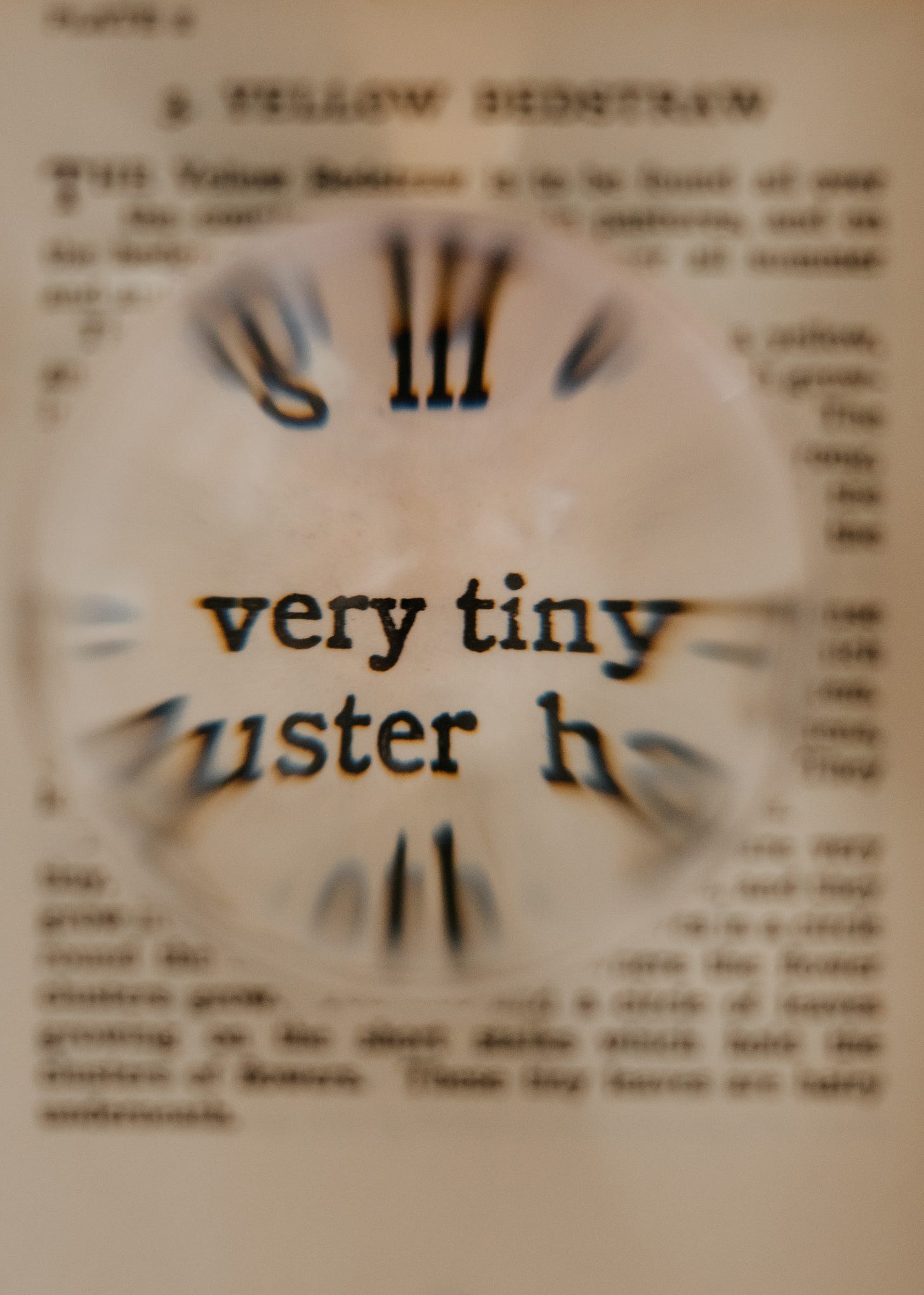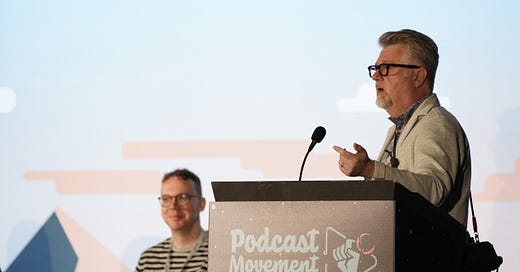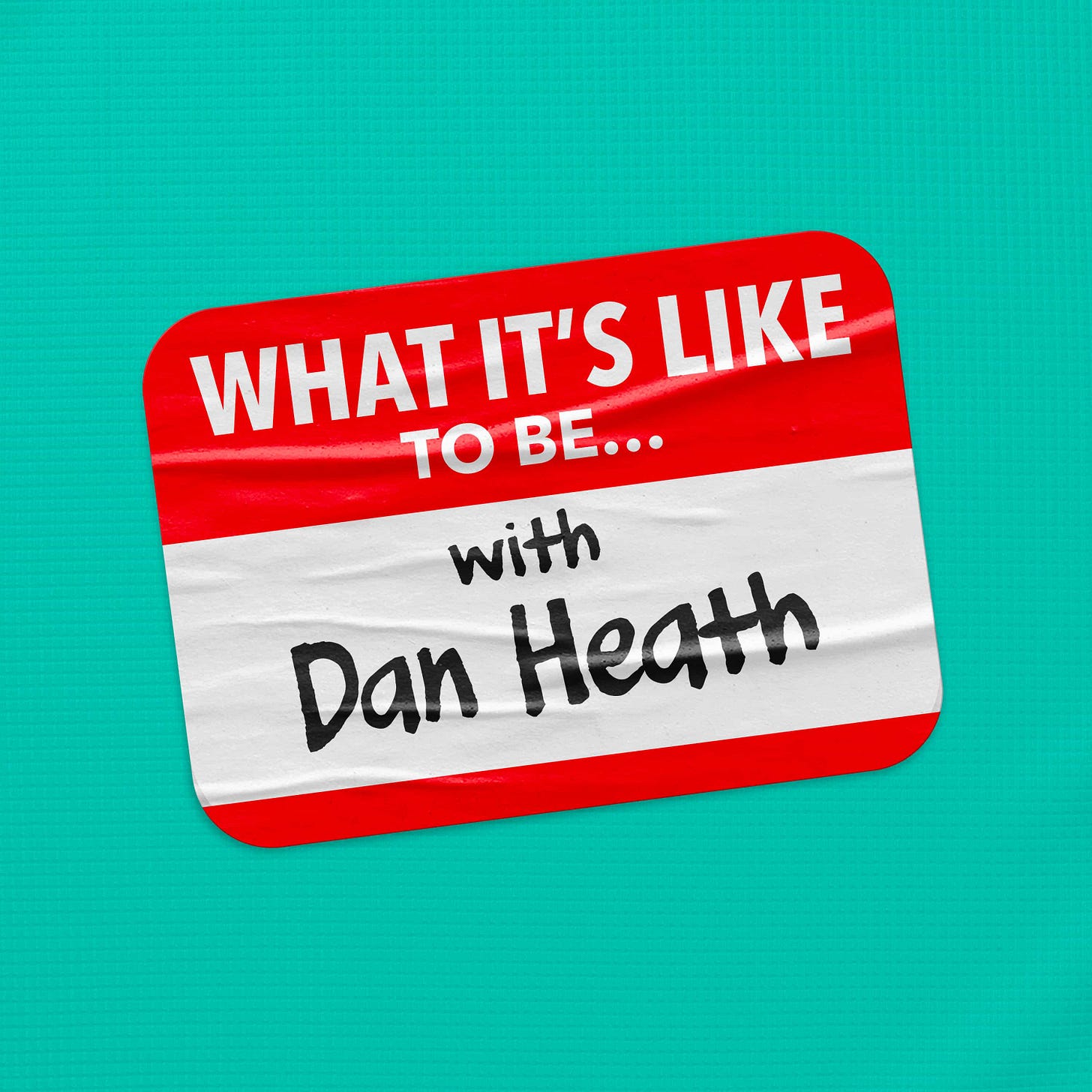The Power of Small Numbers
Finding Gold in Data and Storytelling with Tom Webster of Sounds Profitable
Welcome to the Creativity Business, a newsletter about how to Earn Attention as a marketer or content creator. If you’re not a subscriber, sign up and get content strategy delivered to your inbox every two weeks for free.
Last time on The Creativity Business…
Tom Webster of Sounds Profitable shared his thinking about how to define an audience, which focused on getting very, very specific and defining a single person with multiple interests… and then designing an original, differentiated show to serve them better than anyone else.
In this edition, we’re leaning into a few of Tom’s personal superpowers - interpreting data and research and effectively communicating the takeaways from research. He shares some unconventional and brilliant ideas that I know I will be putting into practice immediately.
Patience with Meatheads
Tom is kind of the all-knowing seer of the podcasting industry. He has been obsessed with researching the industry and providing useful insights to help it grow and thrive since the dawn of the medium in the early aughts. When I was at Pacific Content, Tom very kindly let me interview him whenever one of his big annual research projects was released, and inevitably, I would misinterpret something in the data and jump to a conclusion that was not valid.
Tom is a very patient fella. He deals with people like me all the time and is terrific at teaching others how to better look at data and research. And that’s what he’s going to do in this edition of The Creativity Business…
In Praise of Small Numbers
As someone who writes regularly about Earning Attention and differentiation strategies, Tom’s advice is gold for identifying ‘blue ocean zones’ where you focus on entirely new or underserved areas.
“Anytime you see a list of stats, you will see something at the top of that list, and you will see something in small numbers at the bottom of that list.
“If I am someone looking for opportunity, I'm looking at the bottom of that list. I think people make the mistake and look at the top of that list. And they'll say things like, ‘Look! The most popular form of content right now is five-minute comedy pieces. We need to make a five-minute comedy piece.’
“Great. You're now going to be swimming in a sea of everybody else who thinks that same thing and everybody else that's already doing it.”
And, of course, that means that you have lots of competition and the audience has many eerily similar choices. When you go to the small numbers, though, there are opportunities to super-serve the under-served. And instead of swimming in a sea of everyone else, you’re the big fish in a small pond.

“I love the small numbers. I look at them all the time. I look at the things that are at the bottom with 3% and 4%. And I start to ask myself, who are those people?
“I'll sort everything else in that entire project by those people. ‘Oh, isn't that interesting? Those people have this thing in common.’ Or, ‘These people don't spend as much time with this medium as other people. Maybe there's an opportunity here.’
“I'll look at the blue ocean areas and determine if they're worth pursuing. Is something not popular because it's never going to be? Or is it not popular because it hasn't been done right, or it hasn't been done at all? Or is it that people don't like new things?
“You always have to dig a little bit deeper. You always have to ask the ‘why’ questions. And the ‘why’ questions, to me, often start with the small numbers. I wonder why that's so small. I wonder who those people are.
“One example of this that drives me crazy. People do A/B testing all the time in email marketing. And they will test, for example, the placement of a button. Half the people will get one version of it. The other half will get the other version of it. Button A will convert 15% and Button B will convert 5%. And so they'll just use Button A. Well, 5% did pick Button B! I wonder why they did that? Could we give them button B? Who are they? And nobody ever does that. That's the stuff that drives me crazy.”
How to Communicate Data and Research Effectively
Once you’ve got interesting opportunities or insights from your data or research, it’s often a challenge to share them in a way that is compelling and accessible. There are so many companies and people who have meaty, important information to share but who have a really hard conveying it in a way that doesn’t bore the audience to tears or lull them to sleep.
Tom is the very rare exception. He is an exceptional communicator, especially when talking about data. He finds engaging stories inside the research and brings them to life in a way that people understand, remember, and tell others about. Here’s how he does it:
“A lot of it is leaving stuff out. When I work on a research project, I will first start to cull things away.
“Typically, when I give a research presentation, I'll print out every single graph I could possibly make and spread them all around the floor and the table, and I'll start moving them around.
“I'll start to ask how one slide leads to another. What's related? What's grouped here? Is there a question on this slide that is answered by another slide?
“You start to put those things together and that's still not a story, but at least you’re able to step back and look at what this is driving towards. And what I will try to focus on is what this is telling me about the humans that we talked to. Not ‘Here's the data, here's the data, here's the data.’ I try to form a theory of the human and tell that story.
“Sometimes I'll be looking at a hundred slides and I've got four that seem to work. What can I do with that? What's a theory? What's a hypothesis? And I will ask those questions of the remaining data.
“It's an iterative process and a process of many, many, many reps. It's understanding that you're always driving towards a narrative arc and that people aren't interested in trivia.”
It’s obvious that this is the way to communicate data and research! It’s the same lesson that all great storytellers and artists embrace - find and focus on a narrative and cut away all the pieces that don’t advance the story. Whether it’s a corkboard full of cue cards, a whiteboard full of post-it notes, a movie storyboard, or graphs spread out all over Tom’s floor, the best communicators use tools that allow them to step back, see the big picture, and try different narratives combinations.
Huge thanks to Tom for taking the time to talk shop with me again. In other Tom news, he and the Sounds Profitable team recently published exciting new research about the opportunities for brands in podcasting and will be hosting a free webinar on the research this Thursday.
Takeaways
What are your small numbers, and how can you get more curious about the opportunities within them?
How can you get better at culling the content that doesn’t advance your narrative?
What tools can you use to see the biggest possible picture of your data, research, or content gathering?
Are you telling stories in the same linear fashion in which they were gathered, or are you exploring combinations and permutations that might lead to stronger narratives and more useful insights?
What’s Earned My Attention Lately
Awesome Podcast Alert!
I don’t do this often, but I want to share something new and inspiring from my friend Dan Heath, the New York Times bestselling author and past guest on this newsletter. Dan has a brand new podcast called What It’s Like To Be... and I love it. The show explores the world of work by interviewing interesting people with interesting jobs.
Here’s how Dan describes it:
“This is a show where we geek out about what people do all day in their jobs. In every episode, I interview someone from a different profession -- a mystery novelist, a welder, a couples therapist -- and ask them 100 nosy questions about how their job works. What are the highs? The lows? The stresses?
It's a show that embraces one of the most basic questions of human curiosity: What would it be like to walk in someone else's shoes? And ultimately, in the process of empathizing, we inevitably learn something about ourselves too: Could I hack it as a welder? Could I talk to fighting couples all day? (Answer to both questions for me personally: Most assuredly not.)”
The podcast officially launches tomorrow (October 17), but Dan gave us a sneak peek of the first three episodes, where he talks with a 30-year stadium beer vendor, a couples therapist, and a criminal defense attorney.
You can listen to all episodes here and follow the show on Instagram for behind-the-scenes snippets.
(Dan is also offering a special incentive for readers of The Creativity Business! If you listen to What It's Like To Be... and leave a rating and/or review, reach out to kristin@whatitslike.com, and you'll get a special thank-you item.)
Linktree released its 2023 Creator Report, filled with strong points of view about attention and content strategy.
And finally, a special thanks to Mirko Lagonegro of MDE for chatting with me - all the way from Milan, Italy - this past week about future opportunities for brands making original podcasts
Thanks for reading! If you’d like to know more about Earning Attention with your content strategy and marketing, check out The Creativity Business.







Fantastic read! Thank you.